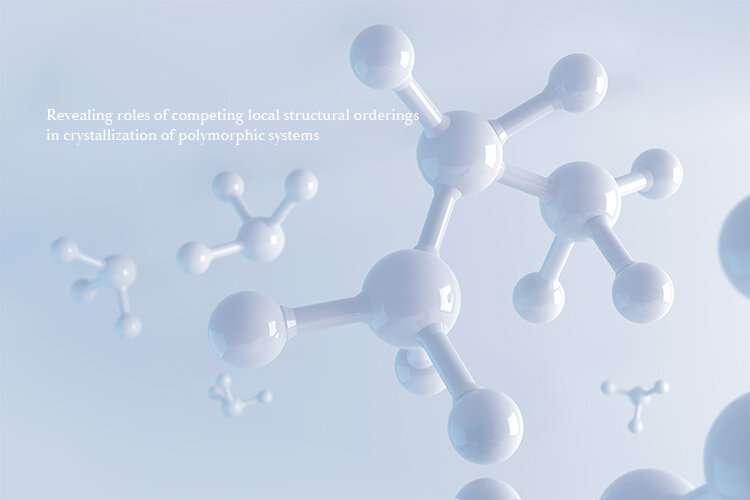Crystal wars: Research may lead to more efficient crystal engineering methods

A team of researchers at the University of Tokyo and Fudan University has studied the process of crystallization when more than one structural arrangement is possible. By reducing the noise from random fluctuations, they found that transient precursors of the various crystalline orderings coexist and compete with each other. This work may help lead to more efficient crystal engineering methods.
One of most popular exhibits of any geology museum is the crystal section. Large, flat, rectangular or tetrahedral faces of an elegant crystal reflect underlying molecular patterns. On closer inspection, some specimens turn out to be mosaics of different shapes, showing that the same atoms can arrange themselves in multiple ways, called polymorphism. In fact, all crystals are just repeating arrangements of atoms or larger particles that typically grow from smaller seeds. These seeds serve as initial templates that allow new particles to attach in the proper locations. However, when multiple structures exhibit similar stabilities, the crystallization process can become extremely complex.
To better understand this, researchers at the University of Tokyo and Fudan University studied an experimental system consisting of uniform poly(methyl methacrylate) colloidal spheres. Using confocal microscopy, which allows tracking the 3-D-positions of many particles simultaneously, along with powerful computer algorithms, the team observed a seething mixture of competing structures constantly breaking and reforming.
Each type of crystalline ordering precursor was in competition to seed the growth of that type of structure. The scientists discovered that the intermediate structures before crystallization was complete turned out to be mixtures of local orders that were short-lived and frequently transformed into each other. "Competition between different crystal orderings takes place locally and can be masked by large positional fluctuations," says senior author Peng Tan.
To overcome this noise, the team had to use computational methods to correctly classify the various structures. The spatial coexistence of phases, together with newly found temporal fluctuations of competing orders, shows that disorder is an intrinsic feature of crystal precursors.
"Our method provides the clearest picture yet of the competition that can exist between the various crystalline forms in a single sample," says senior author Hajime Tanaka. "This research may pave the way for new approaches for the industrial production of crystalline materials."
The work is published in Science Advances as "Revealing roles of competing local structural orderings in crystallization of polymorphic systems."
More information: Revealing roles of competing local structural orderings in crystallization of polymorphic systems, Science Advances (2020). DOI: 10.1126/sciadv.aaw8938
Journal information: Science Advances
Provided by University of Tokyo





















